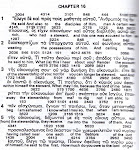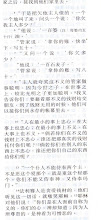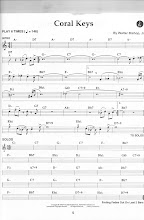Velly Lintelesting
Table 2. Distribution of Household Income, 2007
Income Class
# of Households
(in thousands)
% of Households
All Households 116,783 100.0
Less than $5,000 3,413 2.9
$5,000 to $9,999 5,042 4.3
$10,000 to $14,999 7,051 6.0
$15,000 to $19,999 6,727 5.8
$20,000 to $24,999 6,801 5.8
$25,000 to $29,999 6,314 5.4
$30,000 to $34,999 6,218 5.3
$35,000 to $39,999 5,788 5.0
$40,000 to $44,999 5,750 4.9
$45,000 to $49,999 4,983 4.3
$50,000 to $59,999 9,565 8.2
$60,000 to $69,999 8,009 6.9
$70,000 to $79,999 7,006 6.0
$80,000 to $89,999 5,788 5.0
$90,000 to $99,999 4,741 4.1
$100,000 to $149,999 14,214 12.2
$150,000 to $199,999 5,115 4.4
$200,000 to $249,999 2,012 1.7
$250,000 and above 2,245 1.9
Median Income $50,233
Mean Income $67,609
Source: Department of Commerce, Bureau of the Census.
The Census Bureau also published estimates of the income distribution in 2005 using alternative
definitions of income. Table 3 presents the distributions, by quintile, for these alternative
definitions of income. The first row, money income, shows the income shares using the same
definition of income as that shown in Table 1. Market income includes money income except for
government cash transfers, capital gains and losses, and an imputed return on home equity. It also
subtracts an estimate of work-related expenses.3 Post-Social Insurance Income includes money
income except government means-tested transfers, capital gains and losses, and estimated return
on home equity, and it subtracts work-related expenses. The difference between market income
and post-social insurance income is that the latter excludes means-tested government transfers.
Disposable Income includes money income, the value of non-cash transfers such as food stamps
and subsidized housing, capital gains and losses, and estimated return on home equity. It subtracts
3 Work related expenses includes items such as child care, union dues, permit and license fees, and commuting costs.
Subscribe to:
Post Comments (Atom)
































































No comments:
Post a Comment